GoodHome Malay 9000BTU air conditioner review – tried and tested
The GoodHome Malay 9000BTU Air Conditioner is a big, heavy, white box, but it’ll keep you comfortably cool on hot sticky days
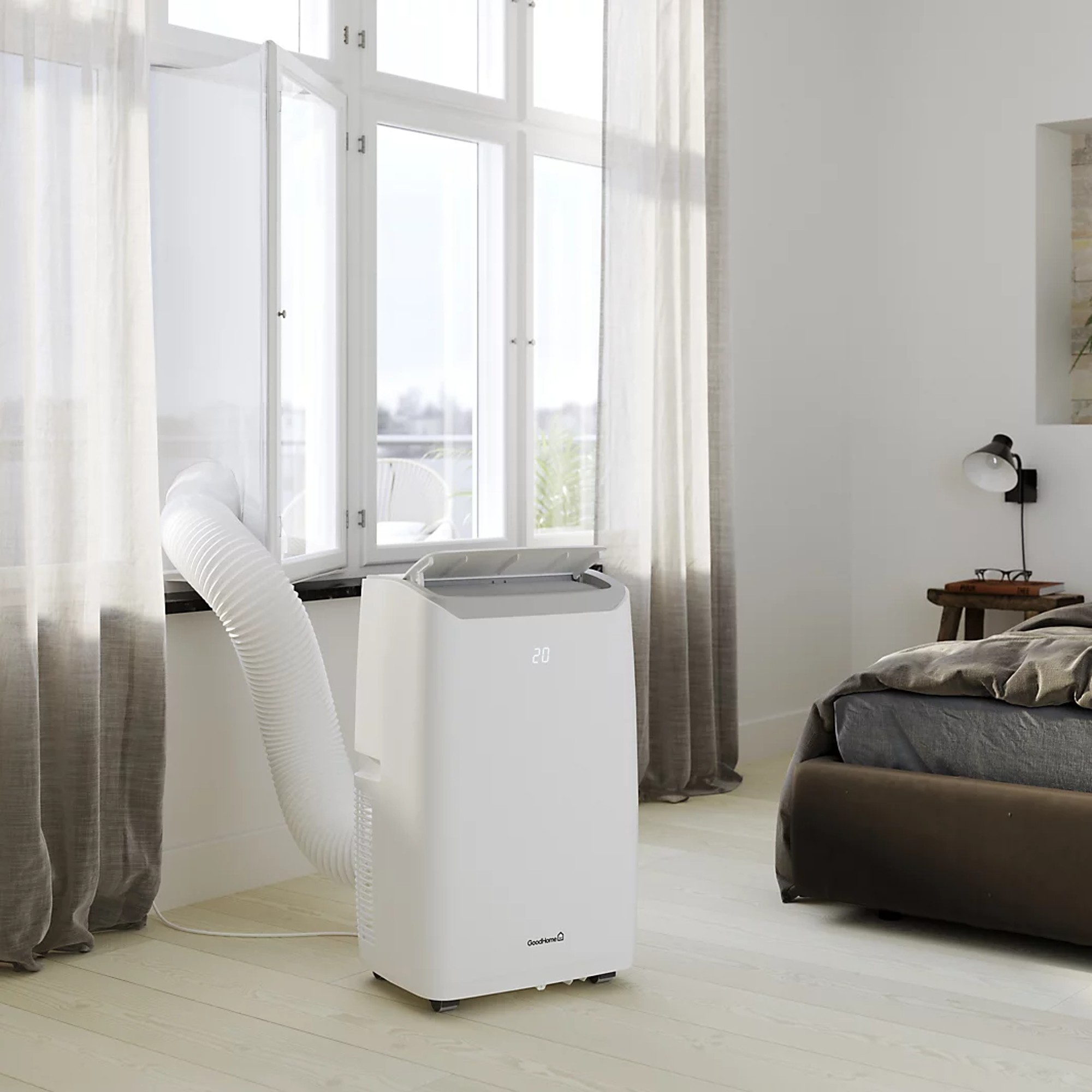
If thoughts of heatwaves have you hot and bothered, then rest assured this portable air conditioner will keep you cool, calm, and collected. Yes, it’s bulky, heavy, and an investment, but it delivers cool, fresh air that will reduce the temperature in a room to a comfortable level
-
+
Efficiently cools a space
-
+
Dehumidifier and fan-only settings
-
+
Sleep mode
-
+
24-hour timer
-
+
Remote control
-
-
Bulky and heavy
-
-
Noisy
-
-
Hose is fiddly to attach
-
-
Instruction manual is lacking
Why you can trust Ideal Home

In the UK we saw record-breaking temperatures last summer, and these extreme weather events are predicted to become more common due to climate change. If you struggle to stay cool when the mercury rises then investing in one of the best portable air conditioners can offer a temporary solution that you can wheel out on those really uncomfortably warm days, and nights.
At £299, the GoodHome Malay 9000BTU Air Conditioner doesn't come cheap, although some of the fancier cooling fans (ahem, Dyson) are far more expensive than this. So, in comparison to other options on the market, its price point isn't too bad. The compromise is having a bulky white box in your living space, but that might be a sacrifice worth making if it means being able to sleep on a hot and humid night.
I tried the GoodHome air conditioner in my home in spring. So while I can’t attest to its efficiency in the height of summer, I certainly experienced its cooling effects on some warm spring days, plus I tried out the dehumidifier and fan functions. It’s got a handy remote control for when you’re too hot to move, and I enjoyed the cool fresh air. However, it’s not perfect.
Read on to find out where this portable air conditioner excels and where it falls down in our GoodHome Malay 9000BTU Air Conditioner review.
GoodHome Malay 9000BTU air conditioner: technical specifications
Functions: air conditioner, fan, dehumidifier
Fan speeds: 3
Temperature range: 15 - 31°C
Dimensions: H71 x 33.5 x 44cm
Cable length: 1.7m
Room size: maximum 20m2
Weight: 27kg
Exhaust duct length: 1.5m
Accessories included: remote control, drain hose, exhaust hose, window kit
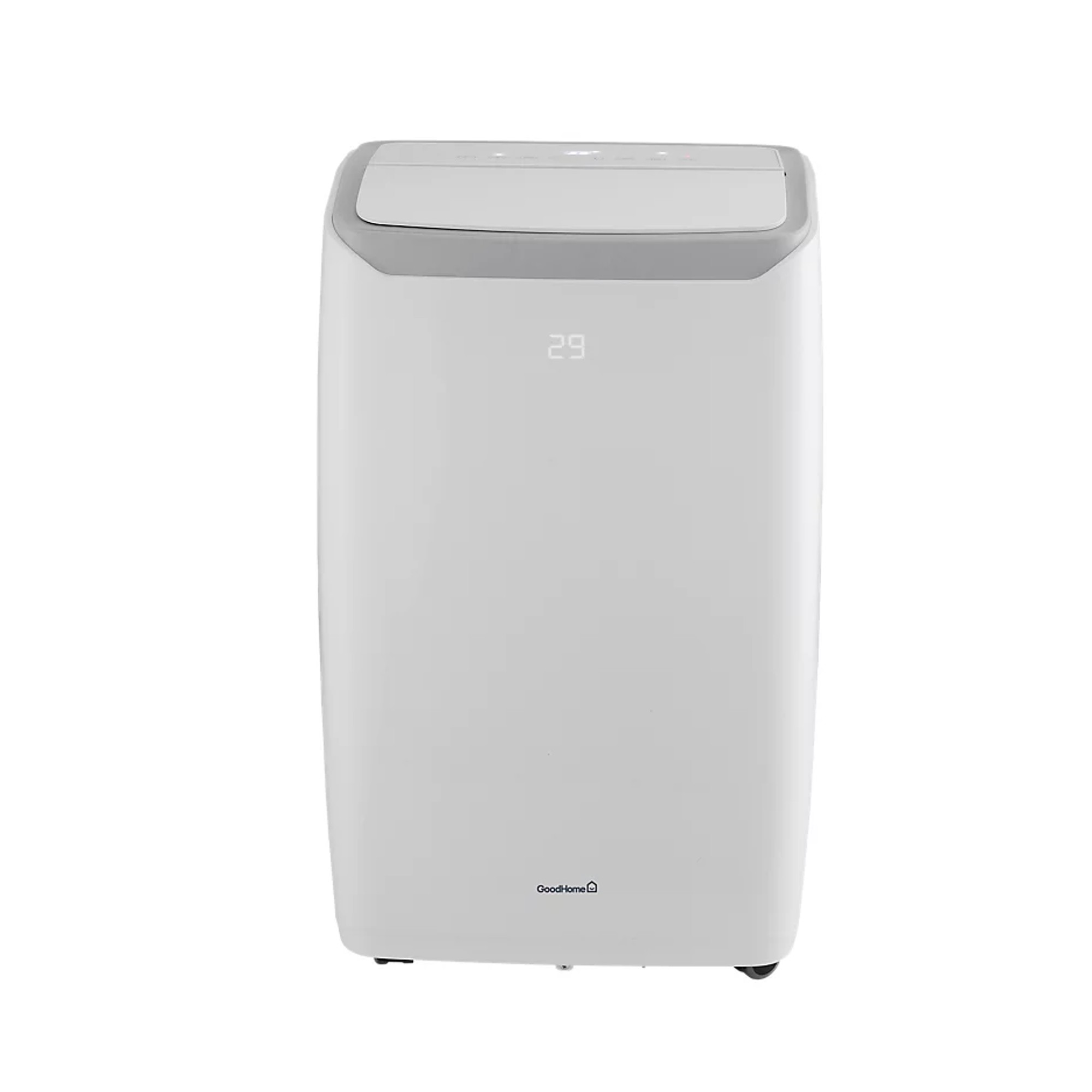
Unboxing and setting up
The GoodHome Malay 9000BTU air conditioner arrived in one box, and I cannot emphasise this enough, moving the box even a little is a two-person job for most people.
It was far bigger and heavier than I expected. I ended up unboxing it right by the front door and since it’s on wheels it was then easier to wheel through the house. I did manage to get it up the eight stairs to my bedroom by myself, but it was a struggle despite me being a regular gym goer. And if I’m honest with myself I probably should have waited until someone was here to help me.
This is the case with most air conditioning units, but definitely something to be aware of before you order.
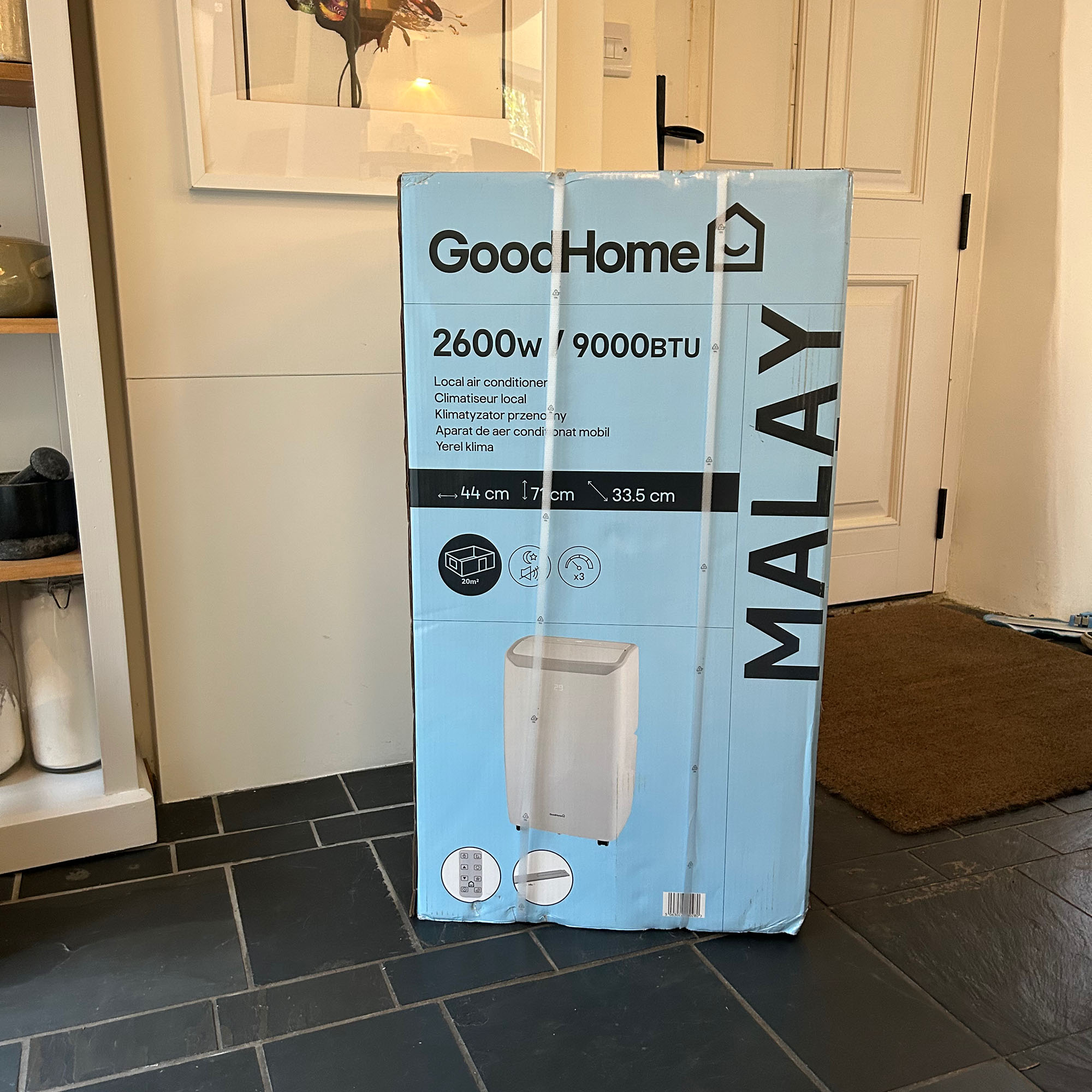
There are some big chunks of polystyrene in the box, and although this is one of my pet hates, I can appreciate that it’s difficult to offer enough protection to such a heavy appliance using cardboard packaging alone.
The good news is that once the air con unit is in position, there isn’t too much assembly to do.
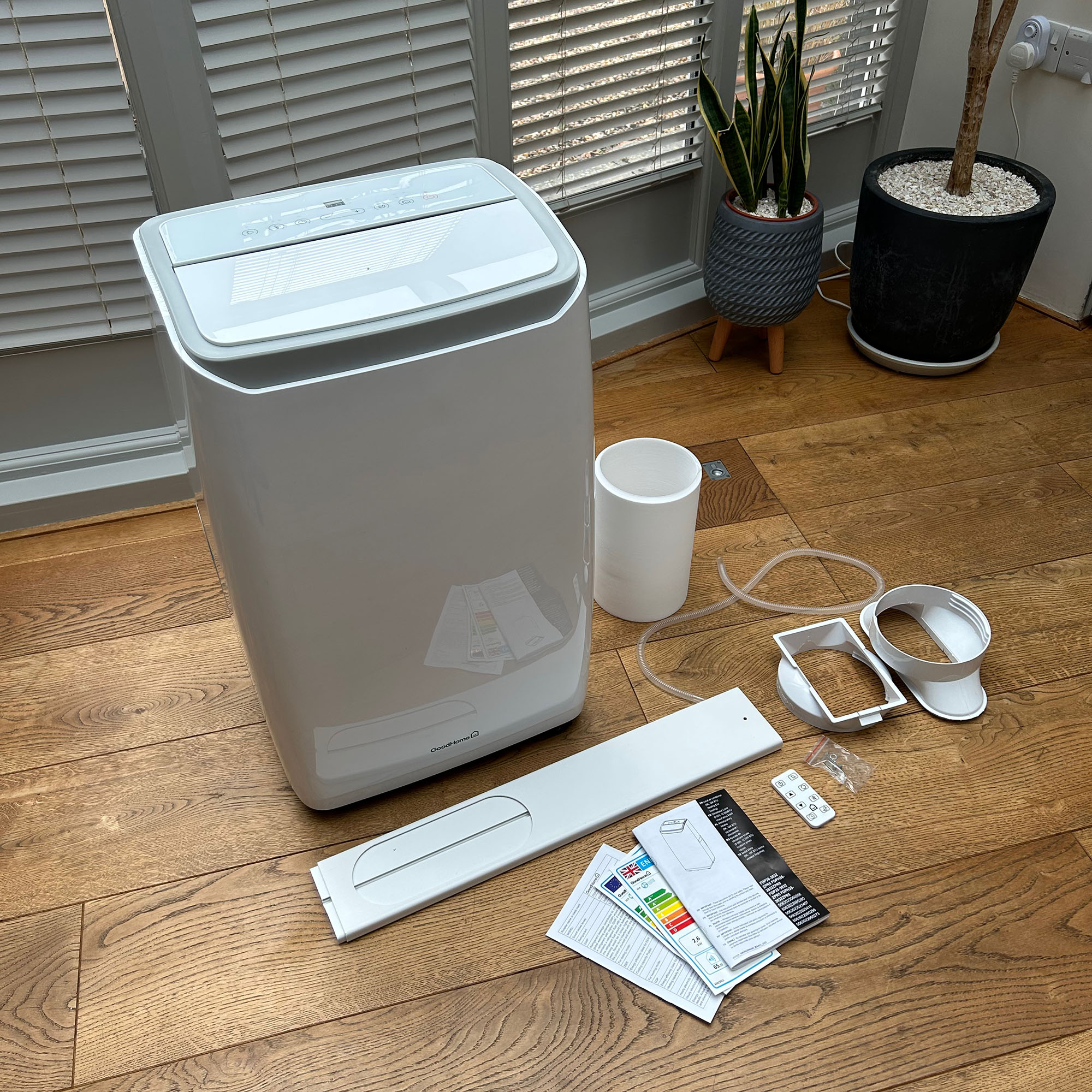
The big concertina plastic exhaust tube that takes the warm air out of the window needs a plastic attachment screwing onto either end. And this is a fiddly, annoying job that took me several attempts (and a few swear words) to get right.
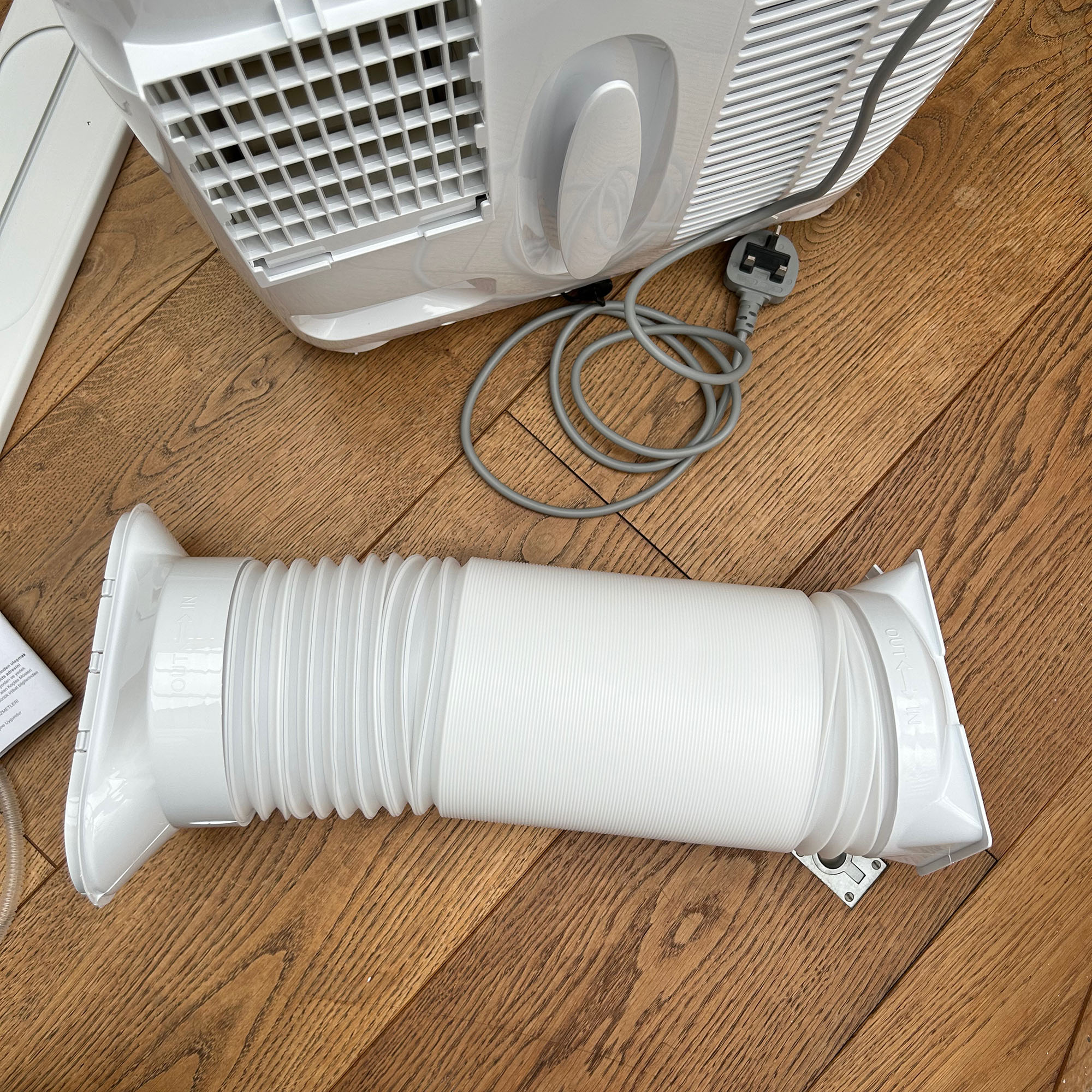
Fortunately, the remote control comes with a battery installed. There’s also a drain tube that doesn’t need to be attached for day-to-day use. It’s for draining water that’s collected inside, or for when using it as a dehumidifier for a prolonged period.
The other main part in the box is the window kit, this adjustable-length rectangular piece of plastic allows you to vent the exhaust pipe out of a window whilst blocking air from coming back in. But it’s quite a generic bit of kit and will only really work on certain shapes and sizes of windows. It does have an extending section, which is useful to make it longer and provides flexibility with regard to the size of the opening, but it’s neither long enough to cover a full-height door nor short enough for smaller windows. It wasn’t suitable for my windows, so in the end, I decided to poke the pipe out of the window and close the window as much as I could.
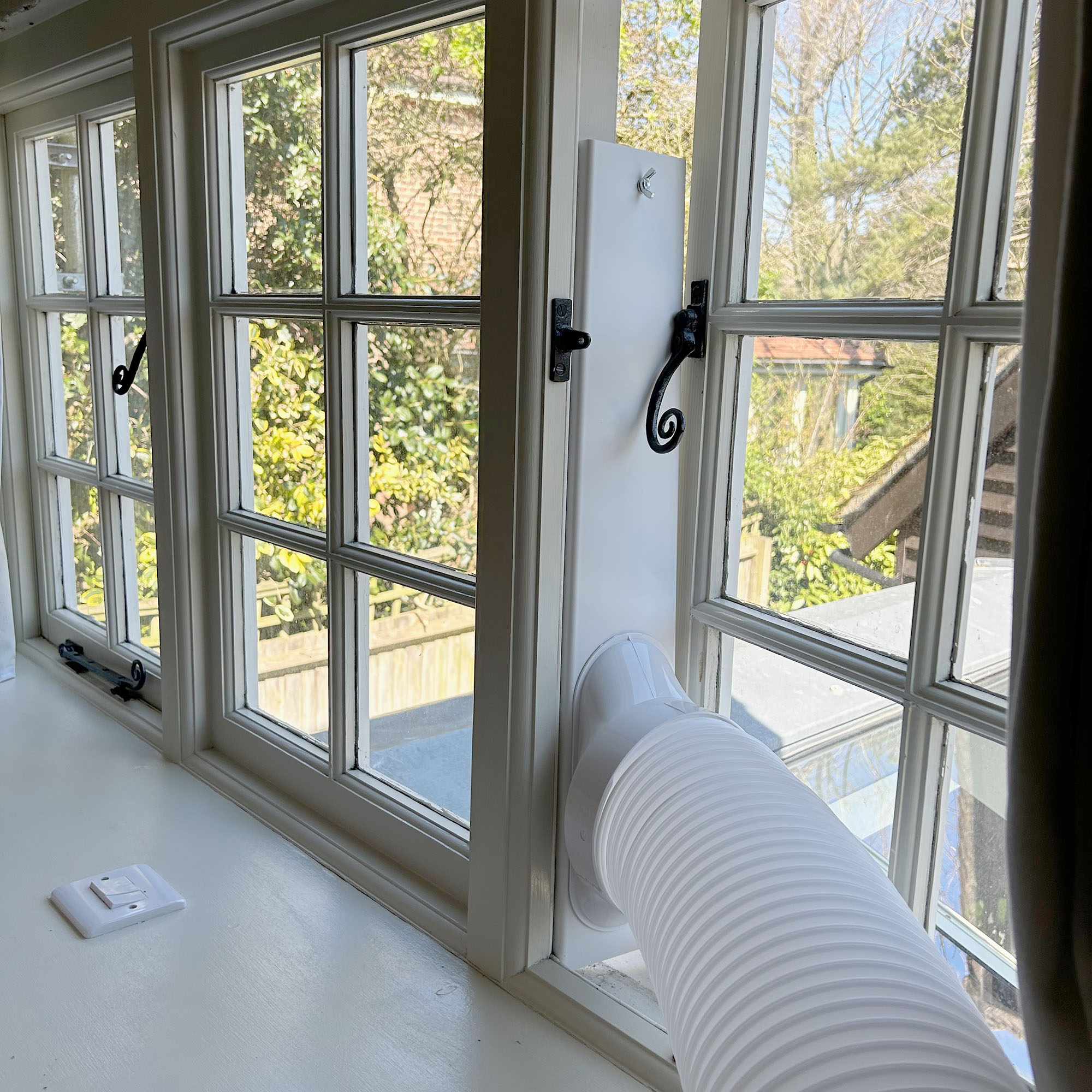
Once upstairs, the wheels didn’t glide as well on the carpet as they did on the hard floor, so pushing it around was tough. The unit needs to be located so that the pipe can get out of an open window or door, plus it’ll either need to be near a power socket or you’ll have to run an extension lead to it.
First impressions
Frustratingly the multilingual instruction manual isn’t divided up by language, so I had to keep flicking through the sections to find all the info, which is peppered throughout the booklet. And while it does include all the basic information, it can be vague in places.
Thankfully the touch control panel on top of the unit is pretty intuitive to use, it just takes a second to figure out what each of the symbols mean. There’s a display screen that indicates the current room temperature, below it you set the desired temperature using the plus and minus buttons. The desired temperature flashes on the screen for a short time, then it flicks back to the current temperature.
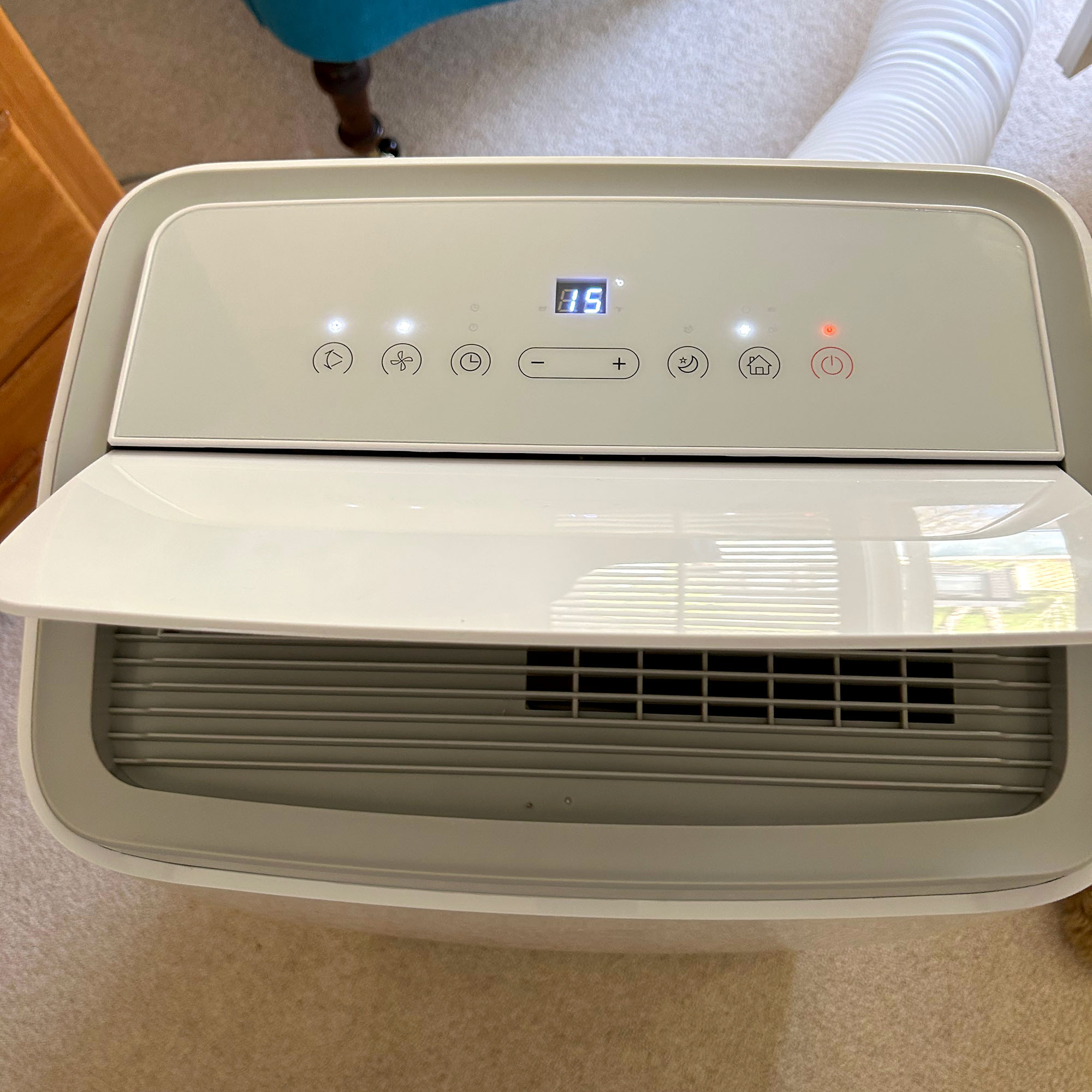
Other settings include the choice of three fan speeds, the option to engage or switch off the fan swing, and sleep mode. The home button allows you to cycle through the functions, which are cool, dehumidify, fan, or auto. In auto mode, it’ll cycle on and off to maintain a set temperature.
There’s a timer button and if you set it when the machine is on, you’re telling it to switch off after a certain number of hours. Whereas if you set it when the machine is on standby, you’re telling it to switch on after a certain number of hours. It’s handy if you’re going out, but want it to start cooling a room in advance of you getting home.
The remote control pretty much has all the same buttons, but it doesn’t have a screen.
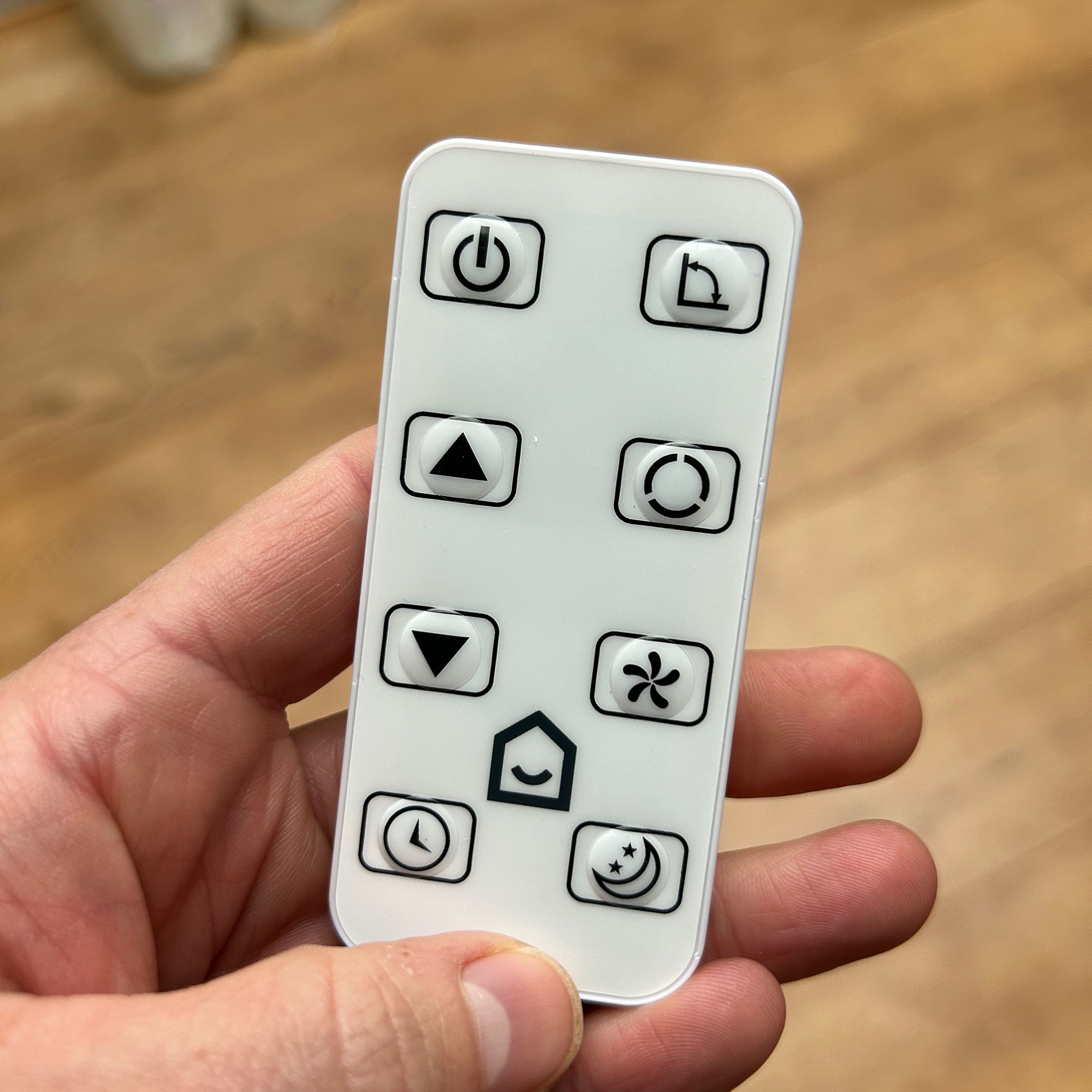
There is an additional display on the front of the appliance that you can see from further away if you’re setting the temperature. However, I struggled to see it at all in bright, sunny rooms.

General use
Although I was testing this air conditioner in spring as opposed to the height of summer, its cooling effect is undeniable. On a particularly warm morning after having the windows closed all night, I switched it on in my bedroom and vented it out into the hallway – I didn’t want to open the window and let any of the cool morning air in, since this would add to the cooling effect and that didn’t seem like a fair test.
After just 10 minutes, I could feel the temperature dropping in the room and surprisingly the air felt fresher and lighter just in that short time. Every time I walked back in there was a noticeable difference in air temperature to the rest of the house. What’s more, the dry air was helping to remove the condensation from the windows – an added bonus.
After about an hour's use, I noticed a wet patch on the carpet and realised the lower bung had clearly become dislodged at some point when I was moving it around. So I replaced it and after this I checked each time that it was in position before starting the air conditioner and I didn’t have the issue again – it’s the kind of thing you only do once.
It doesn’t take long to drop a medium size room by one or two degrees. My bedroom is about 4.4 x 4.8m and it’s in the eaves so the ceiling is low at the sides but super high in the middle, making it a tricky room to keep at a regular temperature, but this air conditioner coped well.
I also tried it in my open-plan living room and dining room. The dining room has a partially glazed south-facing roof so it can get very warm when the sun’s out. The space is much bigger than the 20m2 air conditioner states that it can manage, but despite this, it still had a welcome cooling effect. But unsurprisingly, since it’s not designed to cool such big rooms, I could feel it most in the dining room where it was plugged in and less so in the living room.
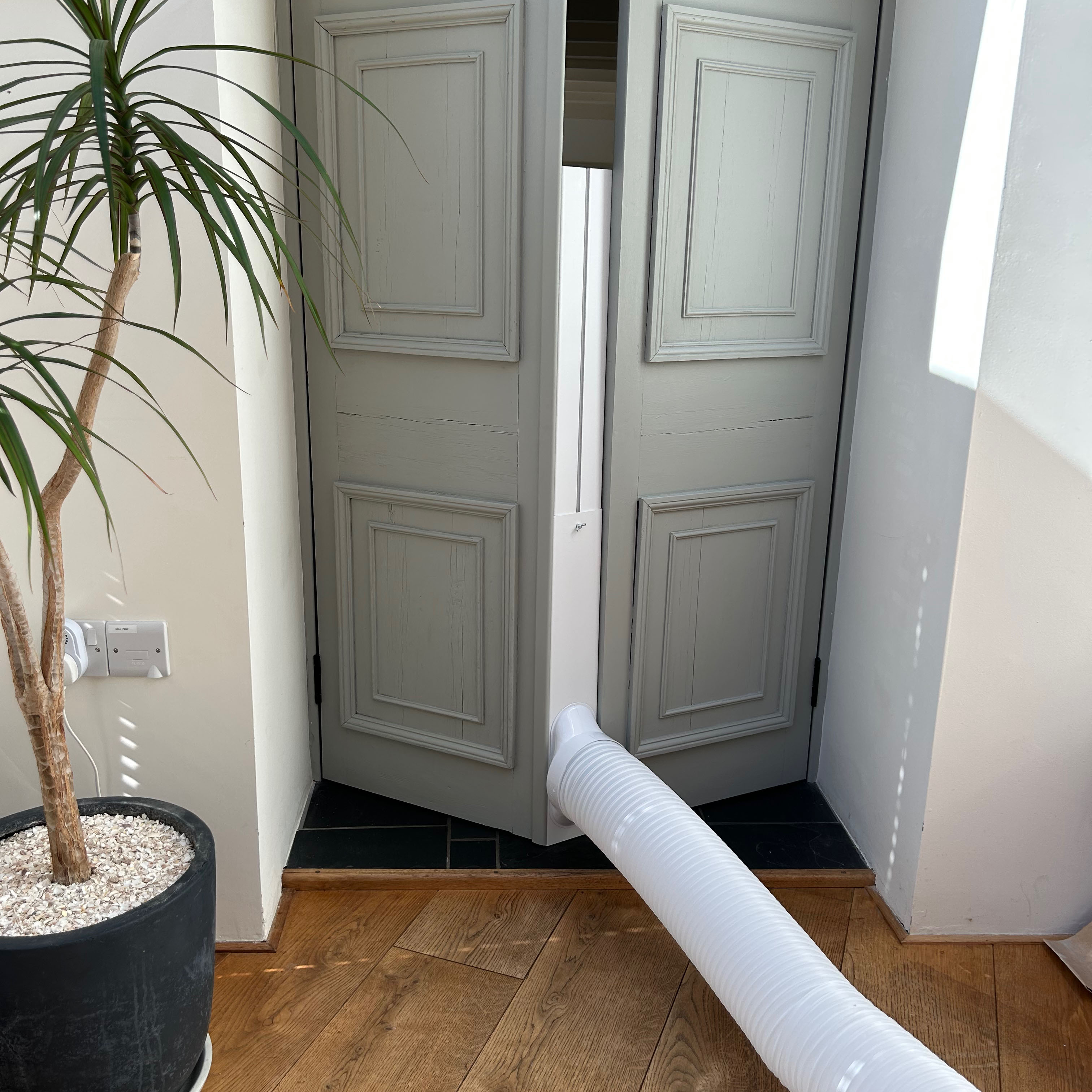
Dehumidifier function
The instructions on using it as a dehumidifier are pretty vague, just that when it’s in this mode the fan runs at a low speed and you can’t adjust the temperature. It also says to connect the hose if dehumidifying for a long time. So to avoid any more soggy carpets, I connected the hose when dehumidifying. But the drain plug is so low that it struggled to drain. I put the other end of the hose in a very shallow baking tray but the water just sat in the pipe – it’s certainly a design feature that could be improved upon.
It can be difficult to quantify how well even the best dehumidifiers are working because it's very much affected by the temperature and humidity in the room. But when I set it up near my airer full of wet laundry, after four hours some of the laundry was completely dry, while thicker items like jeans were about 50% dry. This is definitely faster than drying without the dehumidifier in the room. But unlike my dedicated dehumidifier, you can’t select a humidity level.
Sleep mode
Myself and my husband quite like sleeping with the noise of a fan during summer, I think it’s to do with the white noise. So I didn’t anticipate any issues sleeping with this air conditioner on, especially with the sleep mode activated. But it proved me wrong.
The sleep mode simply reduces the fan to the slowest speed and increases the set temperature by 1°C after one hour then 2°C after two hours, switching it off altogether after six hours. The problem is the compressor still kicks in periodically to keep the room cool and this part is really noisy. I think most people would struggle to sleep with this cycling on and off.
For very hot nights, I’d opt for having it on for a few hours to cool the room completely before going to bed. Then either switch to the lowest fan mode at bedtime or switch it off altogether, since even the lowest fan setting is loud enough to disturb light sleepers.
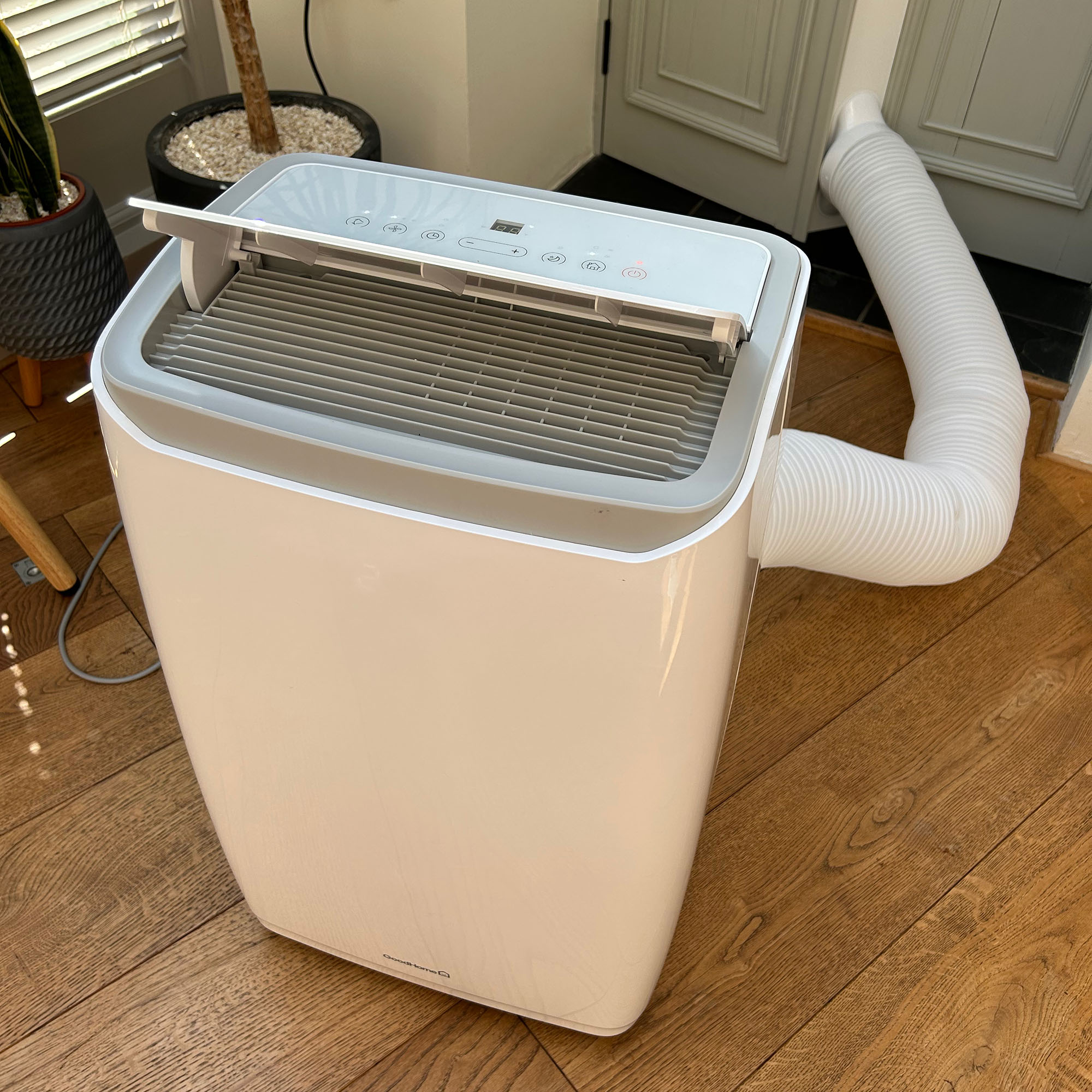
Noise
In air conditioner mode it gets louder every time the compressor kicks in, and when you’re trying to cool a hot room, the compressor will be permanently on. Regardless of whether it was on the low, medium, or high fan setting, when the compressor was running it hit around 65dB on my noise meter, which is pretty loud. I you had it in the living room, you’d have to turn up the volume on the TV a few notches to hear it over the air conditioner. In dehumidifier mode, the noise level is the same but the compressor cycles on and off so there are quieter moments.
Admittedly on the first couple of uses, I thought it was loud, but you do get used to the continual hum and I think on a really hot day, it’s a small annoyance that’ll pale in comparison to the cooling benefit.
When the compressor is off, it’s quieter. So in fan-only mode on the lowest fan speed it’s around 55dB, this increases to 60dB on the highest fan speed. It’s certainly not the quietest or best fan I’ve come across, but it doesn’t creak or squeak like my cheap, old, oscillating fan.
Energy efficiency
At the time of writing, electricity costs around 34p per kWh and I know we’re all keeping a keen eye on our bills and consumption, so I plugged the air conditioner into an electric meter to give you an idea of the running costs.
In air conditioning mode with the fan set to its slowest available speed, it used 0.765kWh of electricity in 60 minutes. That works out at around 26p per hour. Increasing the fan speed to the highest setting didn’t make a huge difference and it used 0.81kWh or around 27.5p in an hour.
But I should caveat this by saying that when I used it on low fan speed on a hotter day – it was 24°C in my dining room – it cost 30p per hour, so I believe the energy consumption will fluctuate depending on the room temperature and how hard it’s having to work. Meaning there’s every possibility that it could cost more at times.
In dehumidifier mode, it costs around 17p per hour to run. Meanwhile, if you’re simply using it as a fan, it’ll cost 1.6p to run for a whole hour on the slow speed, rising to 2.2p an hour on the highest speed. So as you’d expect, the fan-only mode is much cheaper than the air conditioning mode, which is certainly something to think about. But having said that, if you only want a fan, you wouldn’t choose to invest in a bulky and expensive air conditioning unit.
Cleaning and maintenance
Thankfully there’s not too much maintenance required with this air con unit. On the back, there’s a simple filter grill with a mesh screen that just needs to be removed and cleaned of dust after every 100 hours of use, or when it looks visibly dusty. It can be cleaned using a dry brush or washed if necessary, as long as it is dry when it’s reinstalled.
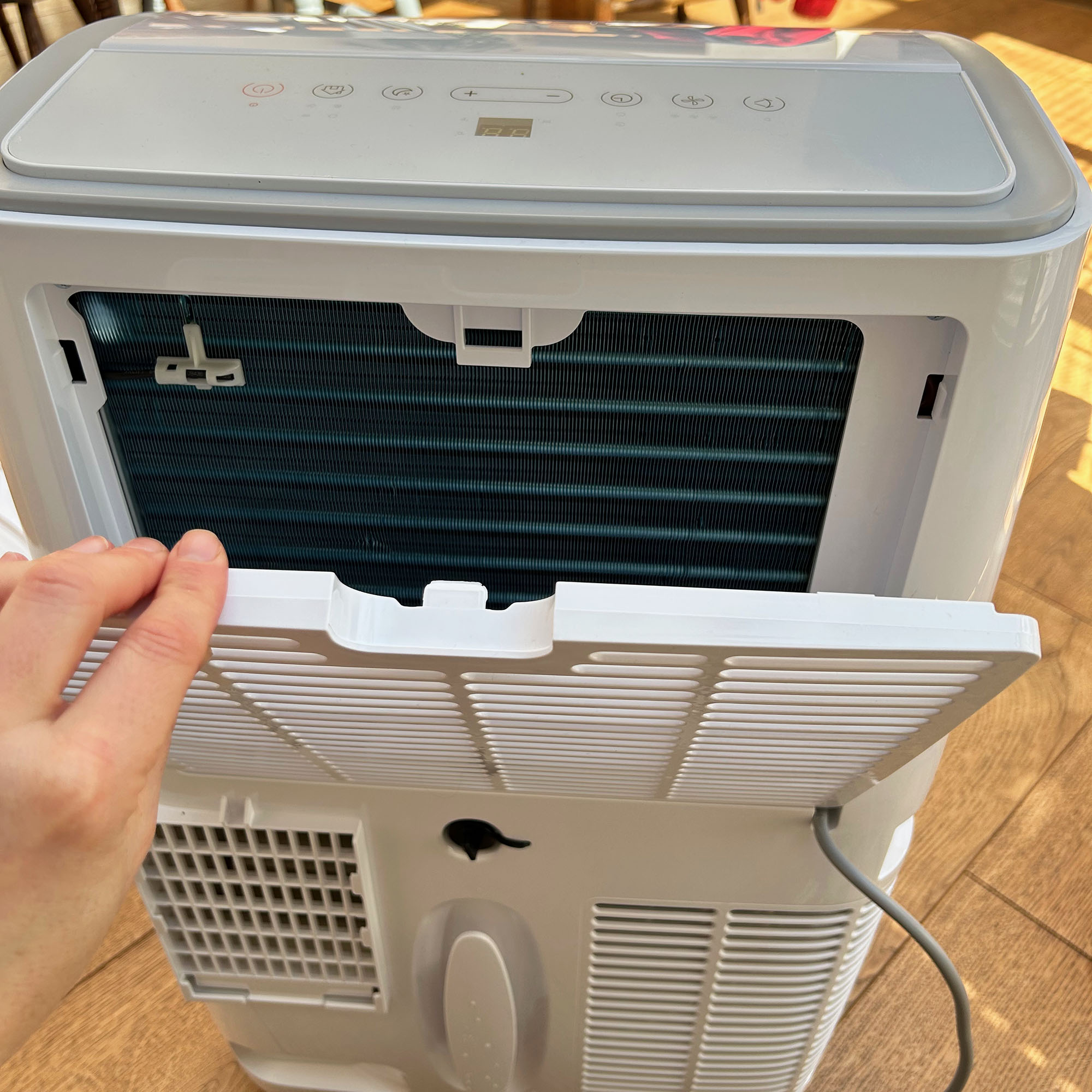
The unit can hold a certain amount of water inside and this is recycled between the condenser and the water plate, but when the water full indicator illuminates it needs to be drained using the hose. This bit can be tricky since the drain plug is low and the hose also needs to be kept low so it’ll drain. I used a flat baking tray to collect the water, but getting the hose on in the first place is fiddly – especially with water trying to gush out at the same time – so keep a towel close by.
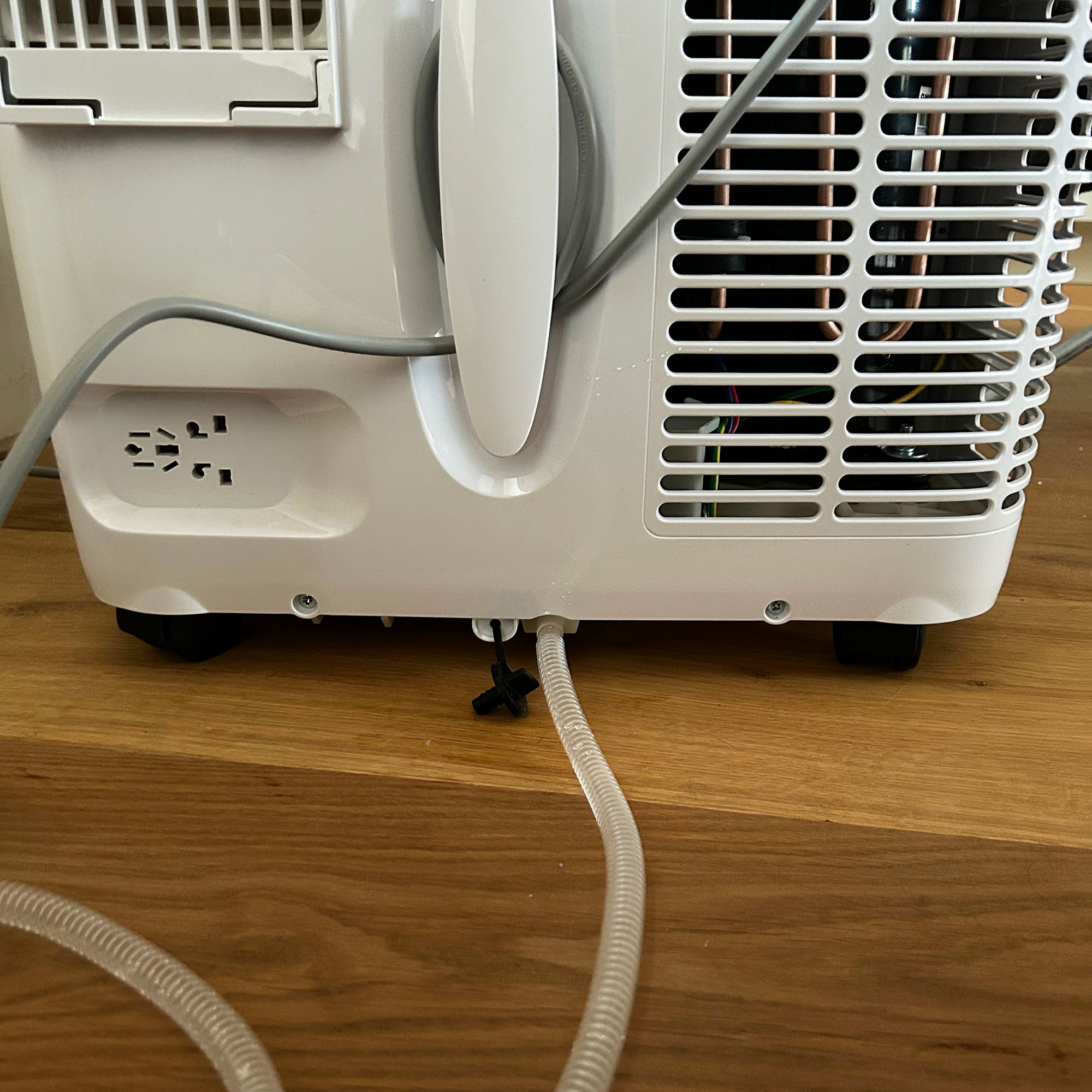
Should you buy the GoodHome Malay 9000BTU Air Conditioner?
If you’re looking for an air conditioner that’s portable enough to move around the house, you’ll probably find this one too heavy and bulky. It’s best suited to a home where it’ll stay in the same place for the summer – unless you live on one level, then you can wheel it from room to room fairly easily. And, if you’re hoping to cool your room as you sleep, I think it’s too noisy.
These issues aside, for general cooling, it’ll get the job done. It’s easy to use and will certainly make life more comfortable on those extra-hot days. There are some fiddly aspects to setting up the exhaust hose, but once that’s done, you can shove the pipe out of a window and enjoy the fresh, cool air, while all your friends complain about the heat!
About this review, and the reviewer
After completing a Home Economics degree, Helen went on to work for the Good Housekeeping Institute and has been reviewing home appliances ever since. She lives in a small village in Buckinghamshire in the UK and was allowed to keep this GoodHome air conditioner after the review.
Helen used this air conditioner in her own home during spring. She tried out all the settings and used gadgets like a noise meter and energy meter to gather some stats to back up her own anecdotal thoughts and feelings about how well it works.
Get the Ideal Home Newsletter
Sign up to our newsletter for style and decor inspiration, house makeovers, project advice and more.

After completing a Home Economics degree, Helen went on to work for the Good Housekeeping Institute and has been reviewing home appliances ever since. She lives in a small village in Buckinghamshire in the UK, where she reviews all sorts of home and garden appliances for Ideal Home using her wealth of experience.
-
 'Picky bits' tableware is the underrated summer trend I'm obsessed with – these are the best pieces from Habitat, John Lewis & Dunelm
'Picky bits' tableware is the underrated summer trend I'm obsessed with – these are the best pieces from Habitat, John Lewis & DunelmAlfresco dining is about to get a serious upgrade
By Holly Cockburn
-
 Aldi’s best-selling pet cooling range is back for summer – these are the buys I’m snapping up for my dog
Aldi’s best-selling pet cooling range is back for summer – these are the buys I’m snapping up for my dogYour pets will love you even more if you invest in this clever range
By Kezia Reynolds
-
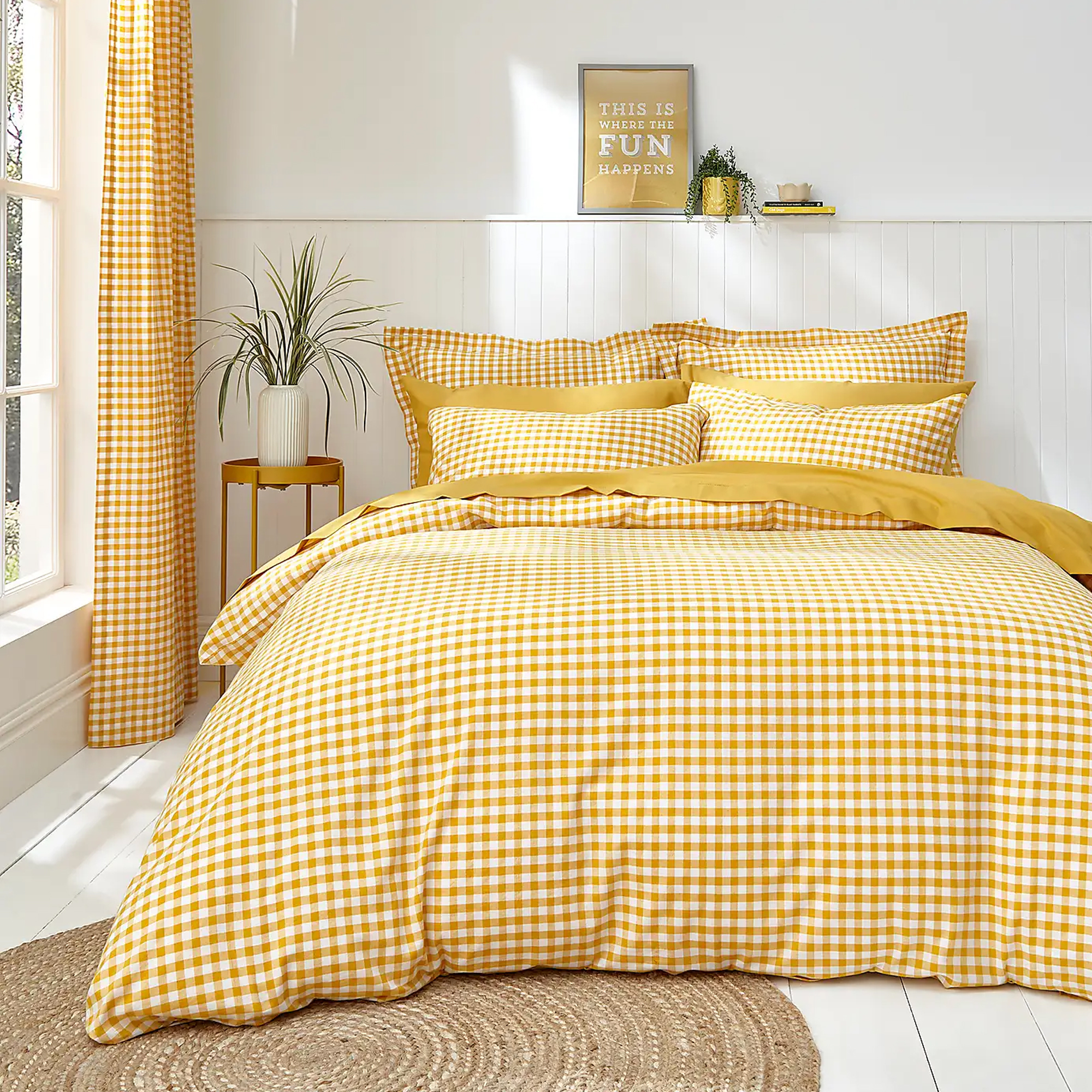 'I'm tempted to buy another one' – this gingham bedding set from Dunelm is so good that shoppers are buying it twice, and it's only £30
'I'm tempted to buy another one' – this gingham bedding set from Dunelm is so good that shoppers are buying it twice, and it's only £30It's only £30
By Amy Lockwood